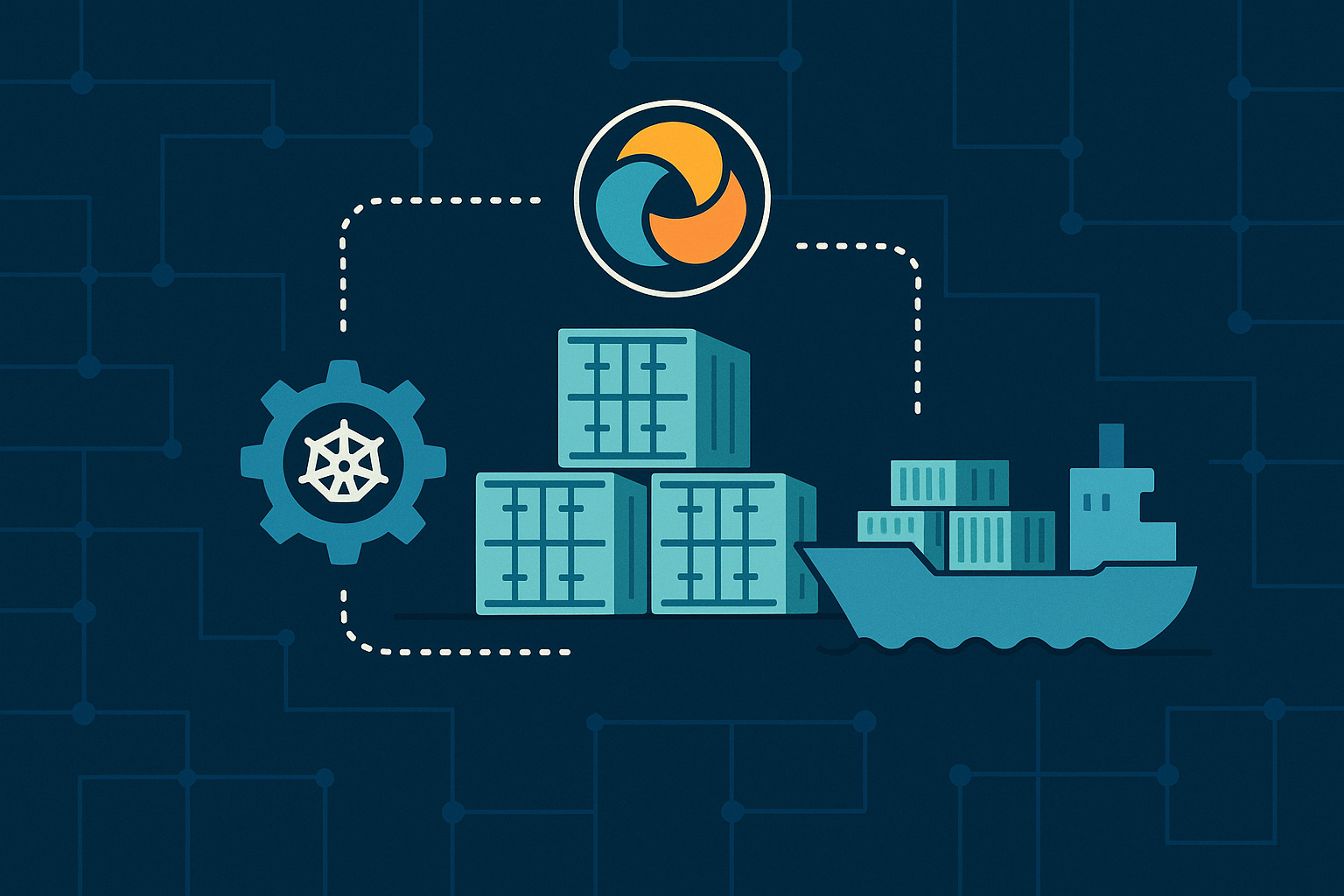
Combining Spagic and Kubernetes for Better Container Management
In modern application development, managing containers plays a critical role in building reliable systems. Today, organizations handle dozens—sometimes hundreds—of interconnected services, integration points, and automated deployment pipelines. Placing an application inside a container is only the first step; the real challenge arises when teams need to orchestrate those containers efficiently to maintain reliability, scalability, and security.
This is why Spagic and Kubernetes work so well together. Spagic, an open-source integration middleware platform, offers powerful tools to manage enterprise-level integration workflows. At the same time, Kubernetes, the industry-standard container orchestration platform, allows teams to deploy, scale, and manage containerized applications across clusters. When combined, these two technologies create a solid foundation for hybrid and cloud-native architectures.
By leveraging Spagic’s integration strengths alongside Kubernetes’ orchestration capabilities, developers, DevOps engineers, and IT architects can automate microservice deployments and ensure stable workflows. Furthermore, integrating these tools in real-world environments improves application lifecycle management, enabling dynamic and scalable integration infrastructure that adapts to evolving business needs.
Using Spagic as an Integration Middleware
Spagic is built for enterprise integration scenarios. It provides a flexible development environment where users can create data flows that connect systems like databases, RESTful services, file systems, SOAP endpoints, or legacy platforms. Using a visual Eclipse-based editor, teams can define how data moves, transforms, and triggers actions.
What sets Spagic apart is its modular design. Developers can use a mix of BPMN (Business Process Model and Notation) workflows, custom Java components, and pre-built connectors to build complex logic. These integration workflows are portable and can be deployed in different environments with minimal changes.
After creating these flows, they can be containerized, which allows for deployment as microservices. This shift from monolithic applications to containerized, modular services introduces flexibility, agility, and faster iteration for integration projects. Once packaged as Docker containers, these microservices can then be orchestrated with Kubernetes.
Running Spagic Containers on a Kubernetes Cluster
Kubernetes enables scalable, reliable deployment of containerized applications. By deploying Spagic containers into a Kubernetes cluster, you gain fine-grained control over resources, deployment strategies, and failover mechanisms. This allows for smooth performance, even during unexpected system events.
To start, developers create Docker images of their Spagic services. These are then defined as pods in Kubernetes using YAML configuration files. Resources such as CPU, memory, and volume claims are allocated depending on workload requirements. Logs and temporary files can be stored using persistent volumes, ensuring data isn’t lost even if a container crashes or restarts.
A significant benefit is the ability to perform rolling updates. Developers can push updates to integration flows, rebuild the Docker image, and Kubernetes will handle the rest—redeploying new containers while phasing out the old ones without downtime. This continuous delivery model ensures production environments stay resilient and up-to-date.
Integrating Kubernetes Services and Spagic Connectors
In a distributed container ecosystem, communication between services must be seamless. Kubernetes uses internal DNS and service abstraction to facilitate reliable service discovery. Instead of relying on fixed IPs, services reference each other by names, and Kubernetes ensures proper routing.
Spagic connectors can dynamically target these internal Kubernetes services. For example, if a REST API is exposed within a pod, Spagic can configure its connector to communicate using the service’s DNS name. This makes the system highly resilient, even when pods are terminated and redeployed.
Furthermore, Kubernetes ConfigMaps and Secrets allow you to manage configuration details like credentials and service endpoints without hardcoding them into your integration flows. This improves security and simplifies maintenance across different environments (dev, staging, production).
Scaling Integration Workloads in Kubernetes
Workloads in an enterprise integration environment vary significantly. Some may require high throughput data processing, while others handle lightweight API calls or scheduled batch jobs. Kubernetes offers horizontal pod autoscaling, which adjusts the number of container instances based on system load.
With Spagic, individual integration flows can be containerized separately, enabling each to scale independently. For example, an ETL process that ingests customer data every hour might require multiple pods to process the volume within acceptable timeframes. Kubernetes can monitor CPU or memory usage and automatically increase or decrease the number of pods as needed.
For more advanced setups, teams can define custom metrics—like message queue depth or request latency—and use them to scale specific Spagic containers. Integration with Prometheus enables fine-tuned autoscaling based on real-time performance data.
Building CI/CD Pipelines for Spagic Microservices
A modern integration architecture isn’t complete without continuous integration and deployment (CI/CD). With Spagic and Kubernetes, CI/CD pipelines ensure that new flows, bug fixes, and enhancements are delivered consistently and rapidly.
Popular CI/CD tools like Jenkins, GitLab CI, and Tekton can automate the build, test, and deployment of Spagic containers. When developers push changes to version control, the pipeline can rebuild the Docker image, run automated tests, and push the image to a registry. Kubernetes can then deploy the image into the appropriate environment using kubectl or Helm.
CI/CD also allows teams to maintain multiple environments—such as development, QA, and production—each with specific configurations and isolated namespaces. This enables safe testing before production rollout, reducing the risk of downtime or regression errors.
Deploying Spagic Modules Using Helm Charts
Helm simplifies Kubernetes deployments by packaging application resources into reusable charts. Helm charts contain templates for pods, services, ingress rules, volume claims, and resource configurations. This makes managing Spagic deployments faster and more scalable.
For example, you can create a Helm chart for each integration flow. Billing services, product synchronization, and order processing can each have their own Helm chart with customized settings. When a new version of the flow is ready, you just update the values file and run a helm upgrade.
This standardization is especially helpful in large organizations with multiple teams. Teams can follow a common deployment structure while retaining the flexibility to customize for their specific business logic.
Integrating Monitoring and Logging Tools for Observability
In a production environment, visibility into system health is non-negotiable. Monitoring and observability tools help detect issues, optimize performance, and provide valuable insights into workflow behavior.
Spagic supports structured logging, which works seamlessly with tools like Fluentd, Elasticsearch, and Kibana (the ELK stack). Each integration step can produce logs that include timestamps, correlation IDs, flow names, and error messages. These are displayed in dashboards that make issue detection and resolution much easier.
For metrics, Kubernetes integrates with Prometheus, allowing real-time visibility into pod status, CPU/memory usage, and custom business metrics exposed by Spagic. Coupled with Grafana, these metrics can be visualized through rich, customizable dashboards that provide a complete overview of your integration ecosystem.
Handling Failures with a Resilient Deployment Strategy
In integration environments, failure handling must be proactive. With Kubernetes, resilience is built-in through probes and self-healing mechanisms. Liveness and readiness probes restart failing containers automatically.
Spagic also supports retry logic and error handlers within workflows. When a call to an external service fails, Spagic can retry after a short interval, switch to a backup endpoint, or log the message for later review. This minimizes disruptions caused by temporary network or system failures.
Another strategy involves storing failed messages in dead-letter queues. Once the root issue is resolved, these messages can be reprocessed. This guarantees no data is lost and allows mission-critical flows to continue without manual intervention.
Configuring Multi-Tenant Architecture Using Namespaces
Organizations often need to serve multiple business units or clients from the same infrastructure. Kubernetes namespaces allow for secure, isolated environments within a single cluster. Each namespace can host its own set of Spagic containers, services, and configurations.
For example, your finance department can run billing integrations in one namespace, while your logistics department runs inventory sync workflows in another. This separation ensures that changes in one environment won’t affect others.
Role-based access control (RBAC) can restrict permissions so teams only manage resources within their own namespace. Resource quotas and usage limits help prevent any single team from consuming too many cluster resources.
Expanding Your Integration Architecture with Event-Driven Design
Traditional integration flows often rely on scheduled jobs or manual triggers. However, modern systems benefit greatly from event-driven architecture (EDA), which responds to system events in real time.
Spagic supports event-based triggers using brokers like Apache Kafka and RabbitMQ. For example, when a new order is placed in your e-commerce system, an event is emitted, and Spagic immediately triggers the relevant integration flow. This leads to faster response times and better user experiences.
In Kubernetes, these event-driven Spagic containers can be scaled rapidly to handle bursts of activity. Once the load drops, the system scales back—saving resources and keeping infrastructure lean.
A Future-Proof Platform for Container Integration
The combination of Spagic and Kubernetes offers a comprehensive platform for building and managing enterprise integration services. Spagic handles the complexity of integration logic and connectivity. Kubernetes provides orchestration, scaling, and automation.
Together, they enable organizations to deploy integration services with greater speed, reliability, and confidence. Whether you’re operating in a multi-cloud, on-prem, or hybrid environment, this architecture ensures that your integration layer is ready for the challenges of modern IT operations.
With modular workflows, automated deployments, advanced observability, and dynamic scaling, Spagic and Kubernetes deliver a future-proof solution. By investing in this strategy today, your team lays the groundwork for long-term agility and success.

